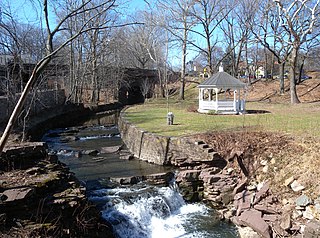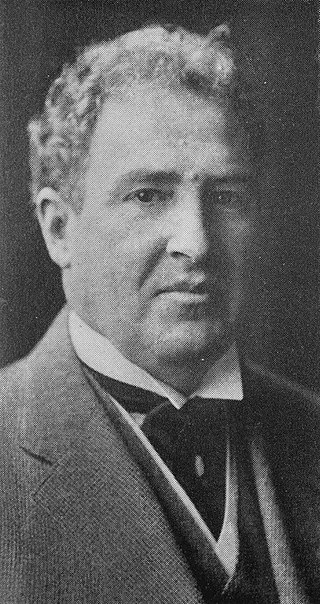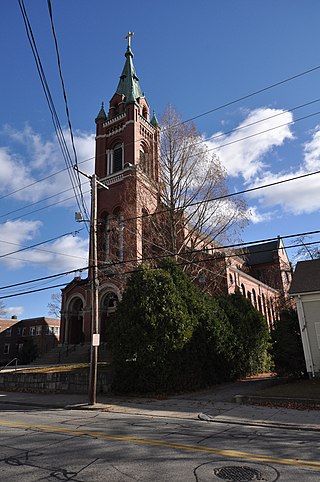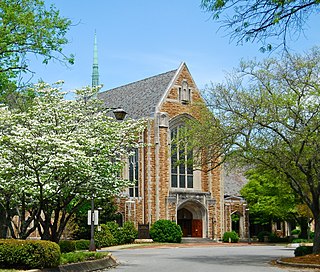
Glen Ridge is a borough in Essex County, in the U.S. state of New Jersey. As of the 2020 United States census, the borough's population was 7,802, an increase of 275 (+3.7%) from the 2010 census count of 7,527, which in turn reflected an increase of 256 (+3.5%) from the 7,271 counted in the 2000 census.

Kearny is a town in the western part of Hudson County, in the U.S. state of New Jersey, and a suburb of Newark. As of the 2020 United States census, the town's population was 41,999, an increase of 1,315 (+3.2%) from the 2010 census count of 40,684, which in turn reflected an increase of 171 (+0.4%) from the 40,513 counted in the 2000 census.
Henry Forbes Bigelow was an American architect, best known for his work with the firm of Bigelow & Wadsworth in Boston, Massachusetts. He was noted as an architect of civic, commercial and domestic buildings. In an obituary, his contemporary William T. Aldrich wrote that "Mr. Bigelow probably contributed more to the creation of charming and distinguished house interiors than any one person of his time." Numerous buildings designed by Bigelow and his associates have been listed on the United States National Register of Historic Places (NRHP).

John Galen Howard was an American architect and educator who began his career in New York before moving to California. He was the principal architect at several firms in both states and employed Julia Morgan early in her architectural career.
Purcell & Elmslie (P&E) was the most widely known iteration of a progressive American architectural practice. P&E was the second most commissioned firm of the Prairie School, after Frank Lloyd Wright. The firm in all iterations was active from 1907 to 1921, with their most famous work being done between 1913 and 1921.
Ashley Horace Thorndike was an American educator and expert on William Shakespeare.

CSHQA is a full-service design firm in the western United States specializing in architecture, engineering and interior design. Established 135 years ago in 1889 in Boise, Idaho, CSHQA is now one of the northwest's architectural and engineering firms, with projects nationwide. Many of their works are listed on the U.S. National Register of Historic Places.

John Virginius Bennes was an American architect who designed numerous buildings throughout the state of Oregon, particularly in Baker City and Portland. In Baker City he did an extensive redesign of the Geiser Grand Hotel, designed several homes, and a now-demolished Elks building. He moved to Portland in 1907 and continued practicing there until 1942.

Arthur Bates Jennings FAIA was an American architect in practice in New York City from c. 1876 to 1919.

Harry S. Coombs (1878–1939) was an American architect practicing in Lewiston, Maine. He was the son of and successor to architect George M. Coombs.

Raymond F. Almirall (1869–1939) was an American architect of the Beaux-Arts period, practicing in New York City.

Walter F. Fontaine was an American architect of French Heritage from Woonsocket, Rhode Island.

Link & Haire was a prolific architectural firm in Montana, formally established on January 1, 1906. It designed a number of buildings that are listed on the National Register of Historic Places.

Alexander Blount Mahood was a Bluefield, West Virginia-based architect.

Keene & Simpson was an American architectural firm based in Kansas City, Missouri, and in practice from 1909 until 1980. The named partners were architects Arthur Samuel Keene FAIA (1875–1966) and Leslie Butler Simpson AIA (1885–1961). In 1955 it became Keene & Simpson & Murphy with the addition of John Thomas Murphy FAIA (1913–1999), who managed the firm until his retirement in 1980.

Ernest C. S. Holmboe (1873–1954) was an American architect best known for his work in West Virginia.

William T. Warren was an American architect from Birmingham, Alabama. He practiced architecture there from 1907 until his death in 1962. Most of his works were designed in association with Eugene H. Knight, his business partner in the firms of Warren & Knight and Warren, Knight & Davis from 1917 until his death.
Glen Wood Huntington (1856-1943) was an American architect who practiced mainly in Denver, Colorado. A number of his works are listed on the National Register of Historic Places or designated as Denver Landmarks for their architecture.

Montrose Park Historic District is a historic district located in South Orange, Essex County, New Jersey, United States. The buildings in the district were built between c. 1870 and c. 1930 and were added to the National Register of Historic Places on August 29, 1997.

Theodore M. Sanders was an American architect in practice in Little Rock, Arkansas from 1905 until his death in 1947. From 1927 to 1938 he was a partner of Charles L. Thompson, Arkansas' preeminent architect of the early twentieth century.



















